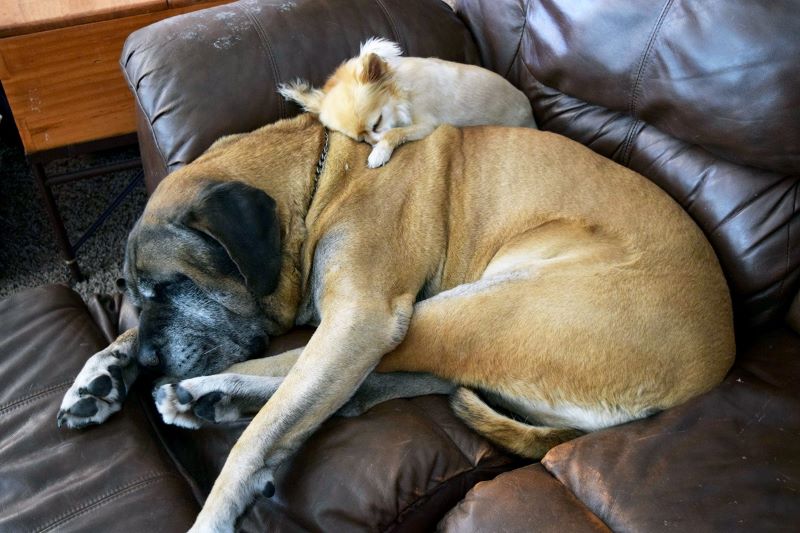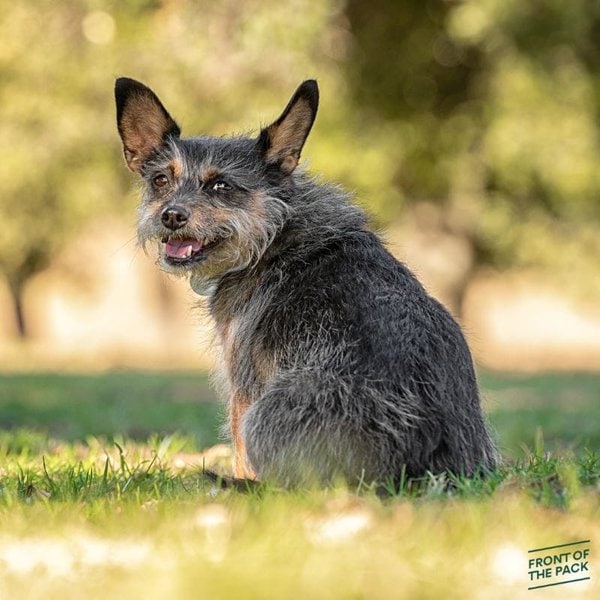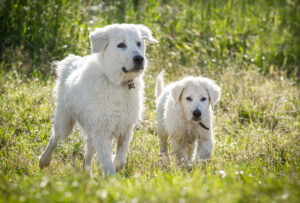Twitching is commonly observed among dogs, but it can be particularly worrying for dog owners, when they can’t pinpoint exactly why their furry friends are experiencing random muscle spasms. So, why then is your dog twitching?
Dogs typically twitch in response to dreams they have while asleep. But twitching can also occur in a dog due to dehydration, poisoning, old age or advanced medical conditions like ataxia that causes the pooch to lose body coordination.
That said, identifying the cause of a dog’s twitching is crucial in determining whether the spasms are something you can handle at home, or a problem requiring urgent medical attention. Most cases of dog twitching typically don’t need professional treatment, but if it happens that medical attention is required, you should act fast to maintain the quality of your Fido’s life. Before we proceed with this article, let’s have a look at when twitching in dogs is completely normal and harmless.
Is It Normal For Dogs To Twitch?
Twitching is completely normal when dogs are asleep or excited, but when a dog constantly twitches while awake, then you may need to sit up and pay more attention.

Dogs twitch for a variety of reasons, when they aren’t sleeping. And the causes of muscle spasms in dogs range from reasons as simple as dehydration, old age or excessive cold, to medical conditions, like poisoning, that require professional treatment.
The bottom line is, twitching is a way for a dog’s body to communicate that the pooch isn’t in the best of conditions, healthwise. And it is your duty, as dog owner, to interpret whatever signals you receive, and decide on the best course of action for the twitching pooch.
That said, the various causes of muscle twitching in dogs are outlined, and succinctly explained in subsequent sections of this article.
Why Is My Dog Suddenly Twitching?
Sudden twitching in dogs may occur because the pooch has been poisoned, the weather is unbearably cold or as a sign of pain.
Poisoning
Dogs come in contact with lots of substances on a daily basis, and these may include toxins that are deemed to be detrimental to the pooch’s health.
That said, if a dog ingests and is poisoned by a harmful plant, material, insect or food substance, such a pooch will tend to twitch involuntarily, due to actions of the toxins in its body.
And along with twitching, you should also watch out for signs such as vomiting, diarrhea, and lethargy, to be truly sure that your dog has been poisoned.
Unfavorable Cold Weather

Dogs have fur to protect against the harsh weather, but regardless they are still susceptible to extreme cold, and may shiver or twitch in a bid to regulate body temperature.
Twitching due to cold is mostly observed in smaller dogs, compared to larger dogs, and this can be attributed to their lesser body mass.
Dehydration
Dogs, especially puppies, are prone to becoming dehydrated if they aren’t drinking enough water. And one way through which you can tell that a dog is dehydrated is by the involuntary muscle twitches that typically accompanies this condition.
Over-exercising is one cause of dehydration in dogs, but a pooch that has been exposed to extreme heat for a significant period, is also at risk of getting dehydrated fast.
Pain
Most dogs are typically stoic, and will show little or no signs of pain when they’re suffering from any of the various medical conditions. But if you observe closely, you may notice a pooch twitching or shivering from pain caused by an underlying health condition.
That said, some of the medical conditions that typically cause tremors and twitching in dogs include canine distemper, tetanus, hypoglycemia, Addison’s disease and common issues like an upset stomach.
Why Is My Dog Twitching And Acting Weird?
Your dog may be twitching and acting weird because it is being stressed out by something in its immediate environment or as a sign of excitement.
Anxiety
Humans tend to shiver or shake nervously when they are in the presence of a fearful object or person, and dogs are no different.
Stressful conditions that may induce tremors and twitching in dogs include thunderstorms, moving to new environments, car rides or being in the presence of strangers. It is also possible to observe weird behavior such as lip licking, tail tucking, cowering, sudden excessive body scratching, whining and hiding.
Excitement

Apart from being anxious, a dog may also twitch and shake involuntarily when it is particularly excited about something.
Being let out to play with other dogs, food being served and the owner returning home after being away at work all day are just instances of situations that may cause a pooch to display excitement by twitching.
Why Is My Dog Twitching And Losing Balance?
Twitching, coupled with a loss of balance, may be an indicator that a dog is suffering from ataxia, which indicates a sensory dysfunction within the pooch’s body.
Ataxia
Canine ataxia is an incoordination within a dog’s nervous system that typically results in the pooch experiencing a loss of body balance, random falls, general body weakness, and muscle tremors or twitching.
That said, ataxia doesn’t occur by itself, and it typically indicates the presence of an underlying health condition in a dog. The causes of ataxia in dogs vary and depend on where the underlying problem is located – spinal cord, inner ear or brainstem.
Some of the most common causes include:
- Brain, ear or spinal cord tumors
- Degeneration of spinal cord tissue
- Spine infection or inflammation
- Physical trauma to the ear
- Fungal infections
- Brain infections, and many more
Ear Infections

One of, if not the most common cause of ataxia in dogs, is an infection of the ear, with an estimated 20% of dogs worldwide suffering from varying degrees of ear infections.
Otitis externa is an infection of a dog’s outer and middle ear region that, if left untreated, can degenerate into an inner ear infection. And it is this inner ear infection that causes a pooch to occasionally lose balance and fall over, and also experience muscle tremors.
Why Does My Dog’s Back Leg Twitch When I Scratch Him?

Your dog’s back leg twitches when you scratch it due to a phenomenon known as the scratch reflex.
The anatomy of the dog’s leg is such that there are nerve endings connecting the pooch’s leg to its spinal cord. Consequently, when certain areas of a dog’s leg are scratched, these nerve endings connected to the spinal cord transmit a message to the pooch’s leg to twitch and kick, in a bid to get rid of an ‘irritant’.
This transmission of signals happens within seconds, and it is what is commonly referred to as the scratch reflex. That said, the scratch reflex has found usefulness in the veterinary world, and it is commonly used by vets as a means of diagnosing and treating nerve damage or other related neurological issues.
Generally, a pooch’s leg twitching when scratched indicates the absence of neurological issues, and suggests that the dog’s nervous system is functioning well.
Conversely, the failure to kick out when scratched at this sweet spot behind the leg, may suggest that something is wrong with its nervous system. A visit to the vet is necessary at that point.
Why Do Dogs Twitch When They’re Sleeping?

Dogs twitch when they are sleeping because they are having dreams, and these dreams can either be pleasant or unpleasant.
Just like humans, dogs tend to pass through the Rapid Eye Movement (REM) stage while sleeping – this is where the eye is rapidly moving behind closed eyelids – and this is the period where pooches actively have dreams. And while it is difficult to predict with certainty what dogs dream about, you can certainly observe twitching and muscle movements during this phase.
Averagely, most dogs will have one-minute dreams at twenty-minute intervals while sleeping, and along with the twitching, the frequency of the dog’s breathing will also become irregular within this period.
Also, most dogs are capable of exhibiting twitching and muscle movements while sleeping, but this phenomenon is mostly observed in puppies and older dogs.
Is Twitching When Sleeping Normal In Dogs?
Twitching while sleeping is completely normal behavior among dogs, and it is usually nothing to worry about. Normal sleep twitching is observed when the dog is lying on its side, with the pooch producing little noises and its paws making paddling motions.
However, if twitching becomes excessive and begins to disrupt a dog’s regular sleeping pattern, then you may need to book an appointment with your vet. Production of froth, vomit or foam, bathroom accidents, and full body shakes while sleeping is also abnormal, and requires urgent medical attention.
Also, if a dog twitches and whines while sleeping, probably due to a bad dream, it is completely understandable that you’ll try to reach out and comfort the pooch. However, this is a bad idea, and jolting a dog out of a bad dream may cause the pooch to act out and display aggression.
Why Do Older Dogs Twitch?

Older dogs twitch or develop leg tremors because they typically lose control of body muscles as they age.
These senior dogs tend to develop bone and joint issues, like arthritis with age, resulting in tremors or uncontrollable twitching. Most times, twitching in older dogs typically affects and weakens the hind legs, but it is also possible to observe foreleg tremors and general body shakes.
In addition, muscle twitching is a typical sign that the senior pooch is nearing the natural end of its life. And if that’s the case, then arrangements should be made to ensure that the pooch’s final days are as comfortable as possible.
What Do I Do If My Dog Is Twitching?
If you do notice that your dog is twitching, you should contact your vet for proper treatment. Non-medical methods can be done by calming an anxious dog or keeping a cold pooch warm.
Twitching in a dog, especially when the pooch is awake, can be a sign of a seizure caused by an underlying medical condition. You may very well save its life by facilitating the right treatment early.
Contact A Vet
Involuntary twitching, coupled with a loss of balance, indicates that a pooch is suffering from a potentially serious medical condition. Hence, the first thing to do, when you notice these symptoms in your dog, is to reach out to your vet for proper diagnosis and treatment.
Treatment for twitching induced by medical conditions such as ataxia varies, depending on the underlying cause. But common treatment forms include surgery, chemotherapy and radiation therapy.
For dogs that have been poisoned, the vet may try to induce vomiting, administer intravenous fluid, try to flush the pooch’s stomach or perform surgery, all in a bid to get rid of the poisonous substances.
Keep The Dog Warm And Hydrated
Twitching caused by a dog becoming dehydrated can be remedied by giving the pooch sufficient water and adequate time to rest.
If the weather is unbearably cold, you can help reduce a dog’s twitching by wrapping such a pooch in warm, comfortable blankets or heating up the home.
Try Calming The Dog
As stated earlier, anxiety and fear may also be responsible for a dog’s twitching. Hence, if you want to stop the twitching induced by fear, it is important for you to reassure your dog that it is safe.
Speaking to a fearful dog in a calm and reassuring tone will go a long way in easing its anxiety. And another very effective way of calming a stressed dog is with the use of a special dog calming product, the Thundershirt Classic Dog Anxiety Jacket.
The Thundershirt jacket, when wrapped around a stressed pooch, exerts gentle pressure on the torso, similar to a comforting hug, thereby helping reduce anxiety and stress. And the jacket is also very flexible, meaning it can be used on dogs of different sizes.





